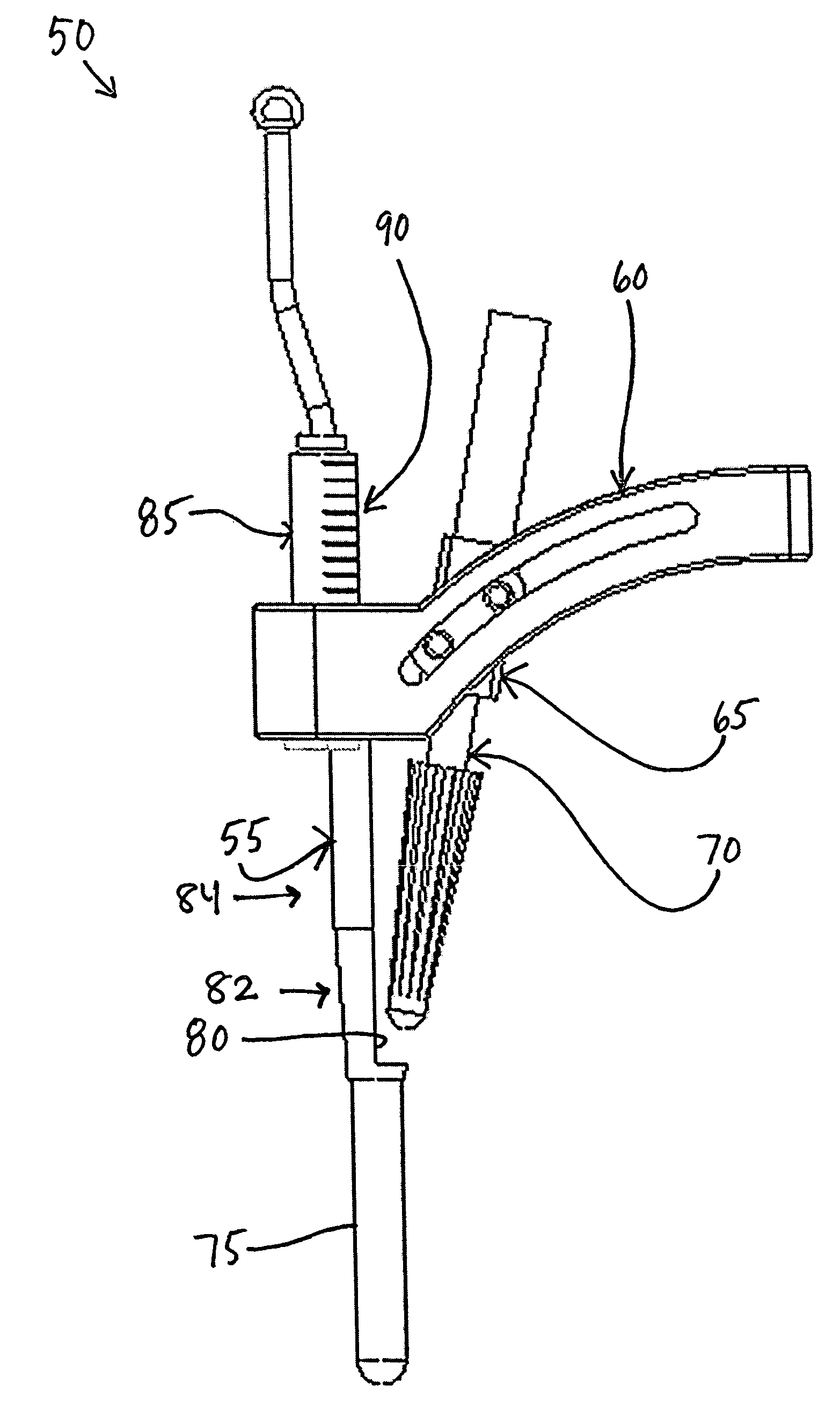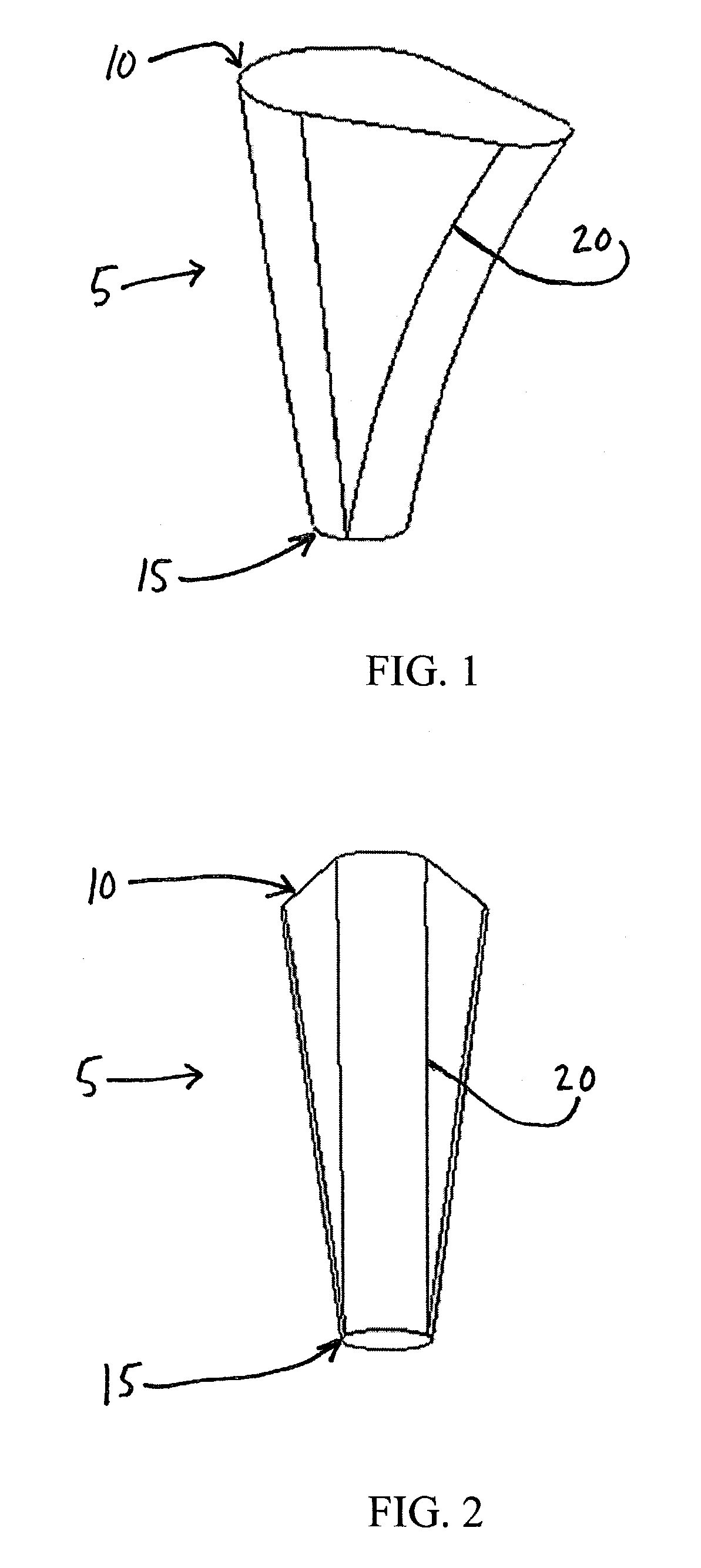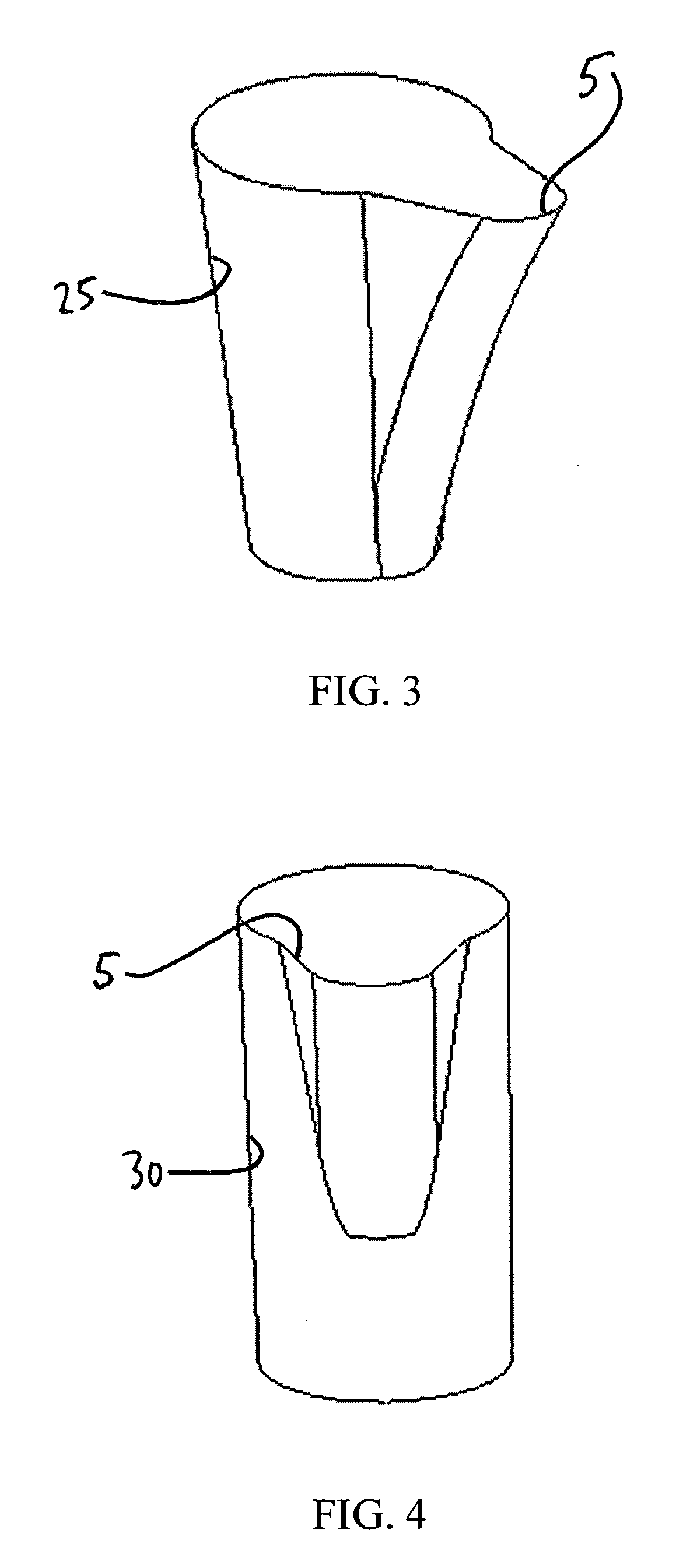Bone milling instrument
a milling instrument and bone technology, applied in bone drill guides, medical science, surgery, etc., can solve the problems of inability to match the internal anatomy of the bone, inability to accurately machine the shape of inability to accurately fit the implant to the bone, etc., to achieve more anatomically correct shape, complex and anatomically correct implant shape, and more complex bone anatomy.
- Summary
- Abstract
- Description
- Claims
- Application Information
AI Technical Summary
Benefits of technology
Problems solved by technology
Method used
Image
Examples
Embodiment Construction
[0021]Referring to FIGS. 1 and 2, and in a preferred embodiment of the present invention, there is shown a first shaped cavity 5, which is illustrated as a solid object 5 but is actually a void within bone (not shown). Such a cavity 5 is preferably wedge shaped and has two ends, including a large end 10 and a smaller end 15, with tapering sides 20 that form at a compound angle to the central axis of the cavity.
[0022]As shown in FIGS. 3 and 4, tapering cavity 5 can be intersected with other shaped cavities including, but not limited to, a cone 25 (FIG. 3) or a cylinder 30 (FIG. 4), so as to form a composite shape that would conform to the implant.
[0023]Referring now to FIG. 5, there is shown an implant 35 disposed within cavity 5. Cavity 5 has tapering sides designed to transfer loads evenly to the bone as indicated by arrows 40. This configuration will also stimulate bone growth.
[0024]The instrument can create the wedge opening along a curve (such as a medial curve) or along another...
PUM
 Login to View More
Login to View More Abstract
Description
Claims
Application Information
 Login to View More
Login to View More - R&D
- Intellectual Property
- Life Sciences
- Materials
- Tech Scout
- Unparalleled Data Quality
- Higher Quality Content
- 60% Fewer Hallucinations
Browse by: Latest US Patents, China's latest patents, Technical Efficacy Thesaurus, Application Domain, Technology Topic, Popular Technical Reports.
© 2025 PatSnap. All rights reserved.Legal|Privacy policy|Modern Slavery Act Transparency Statement|Sitemap|About US| Contact US: help@patsnap.com



